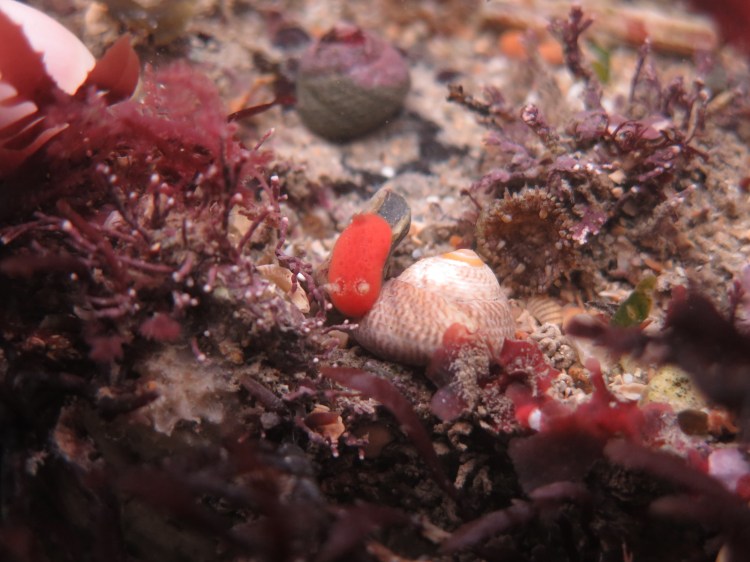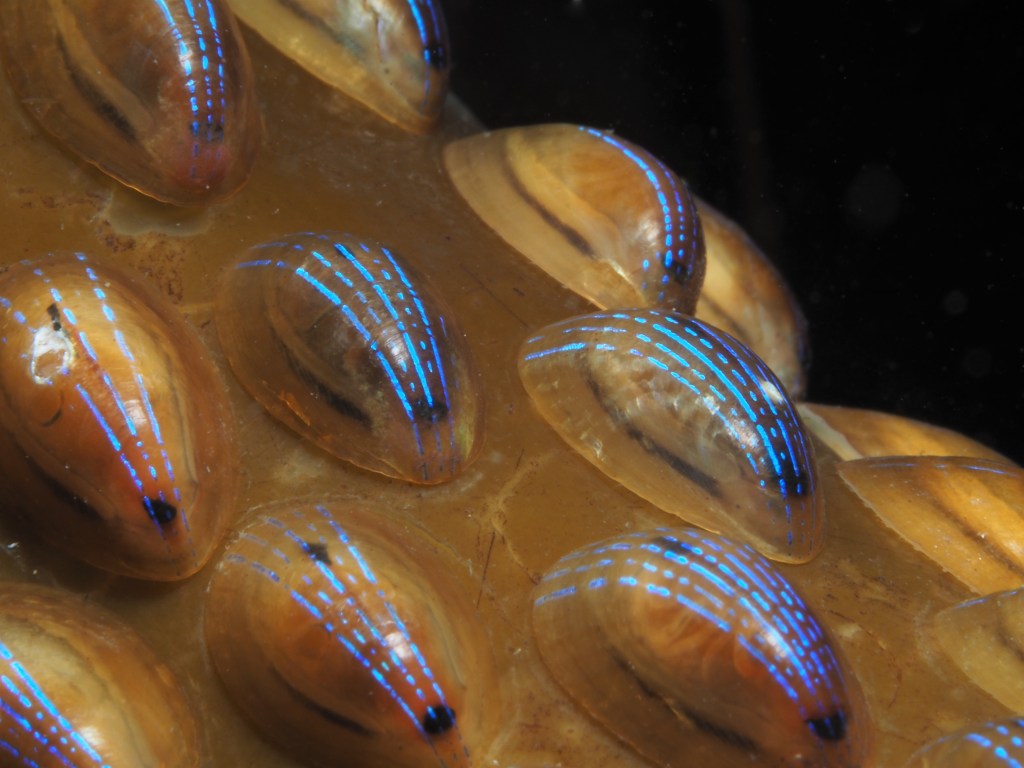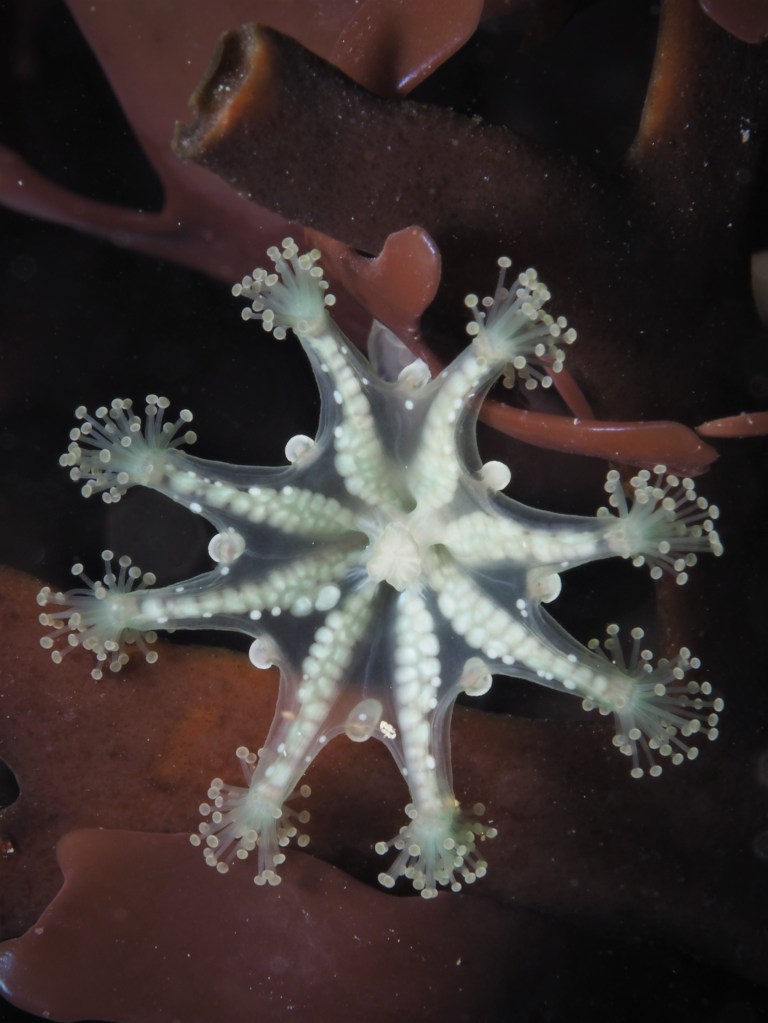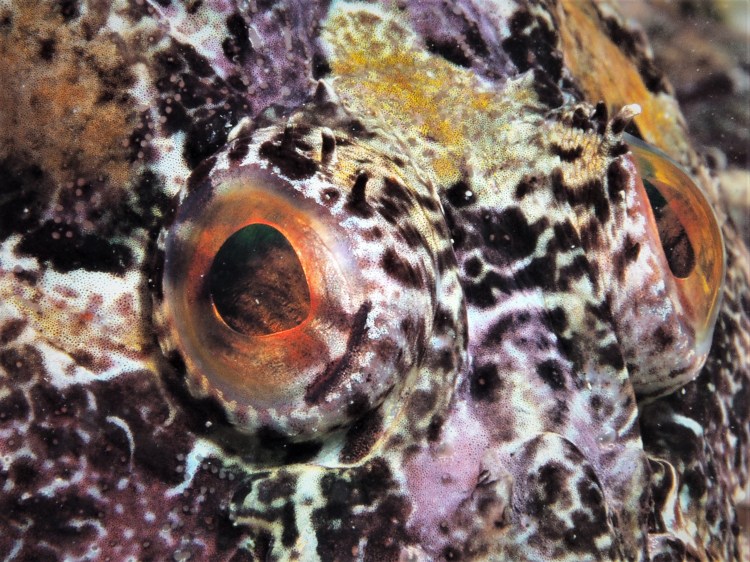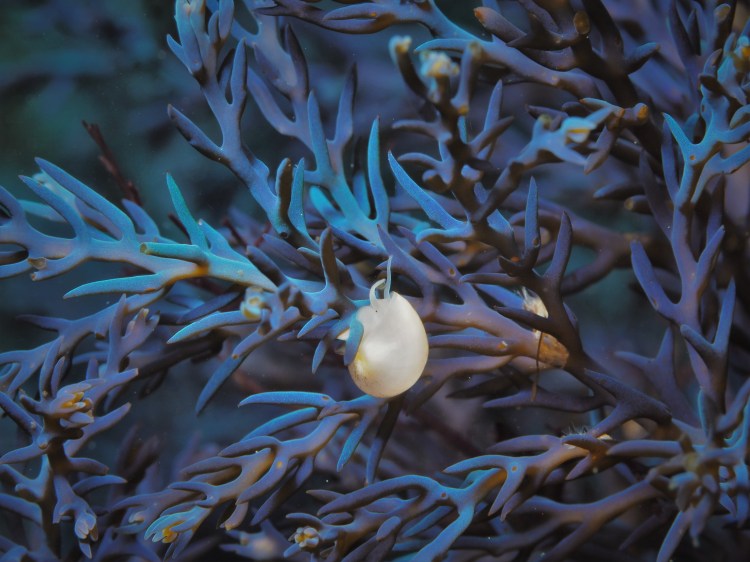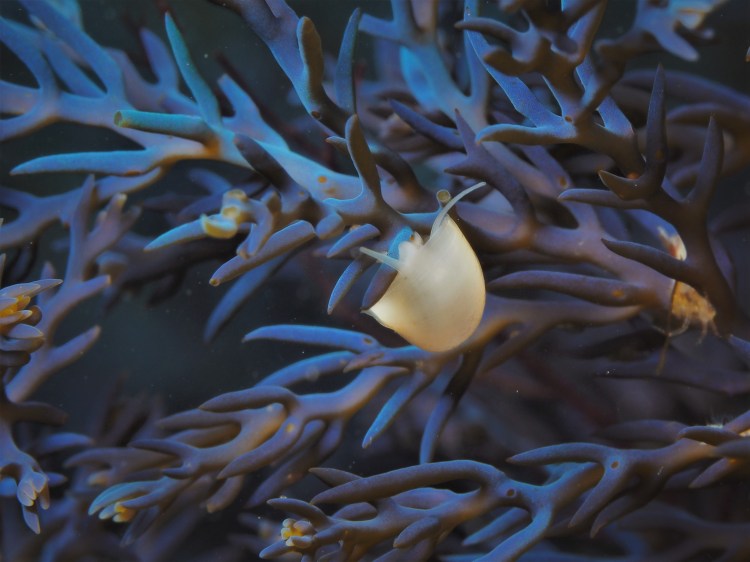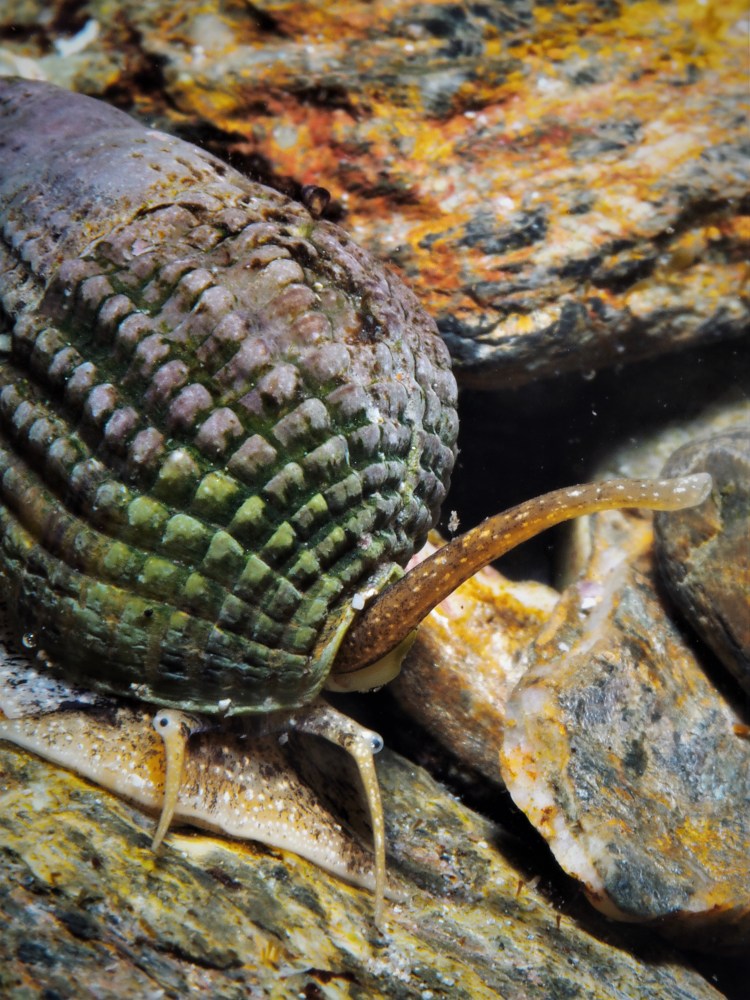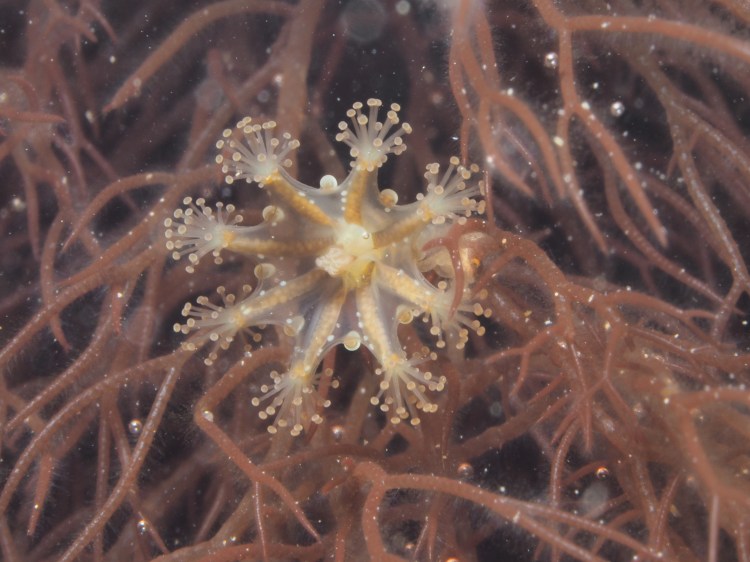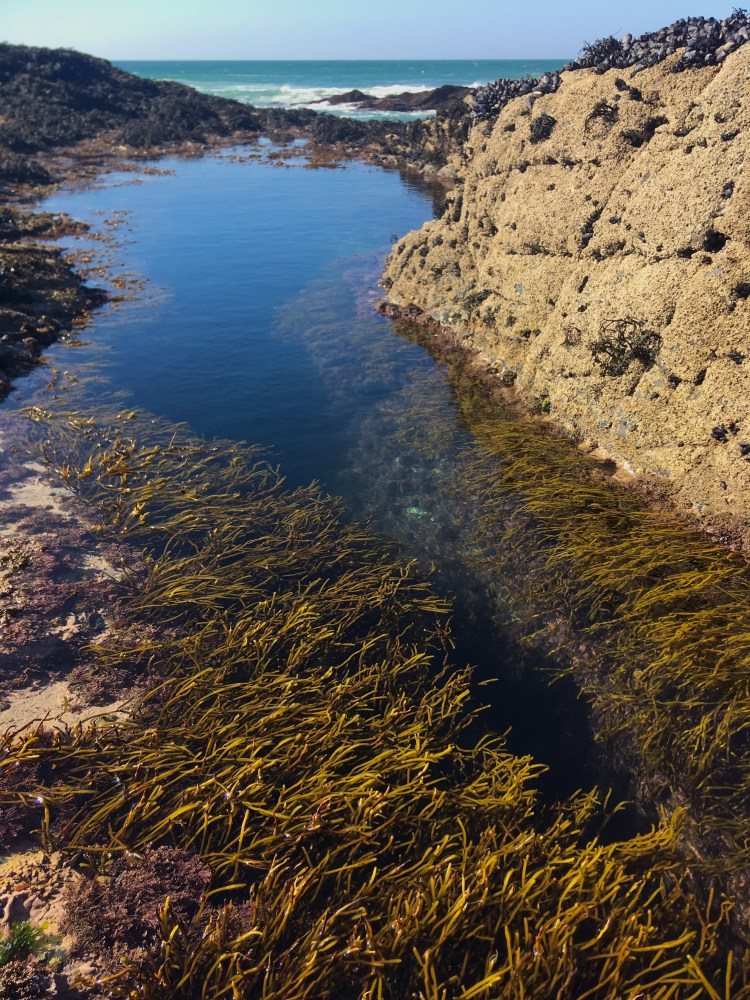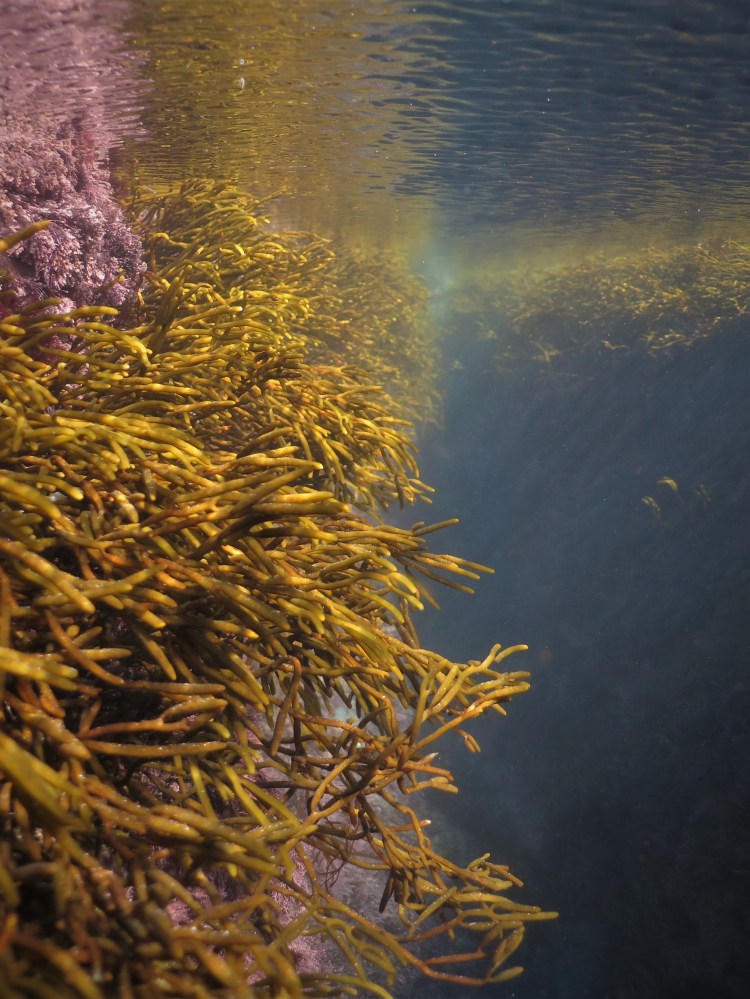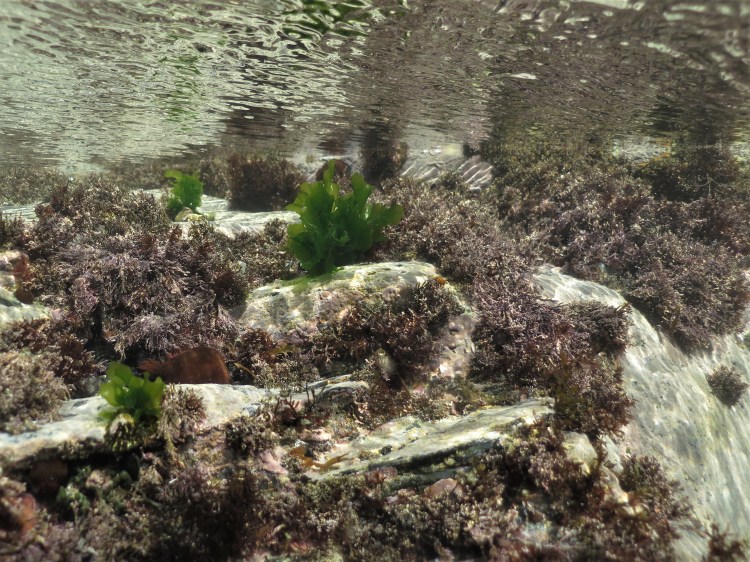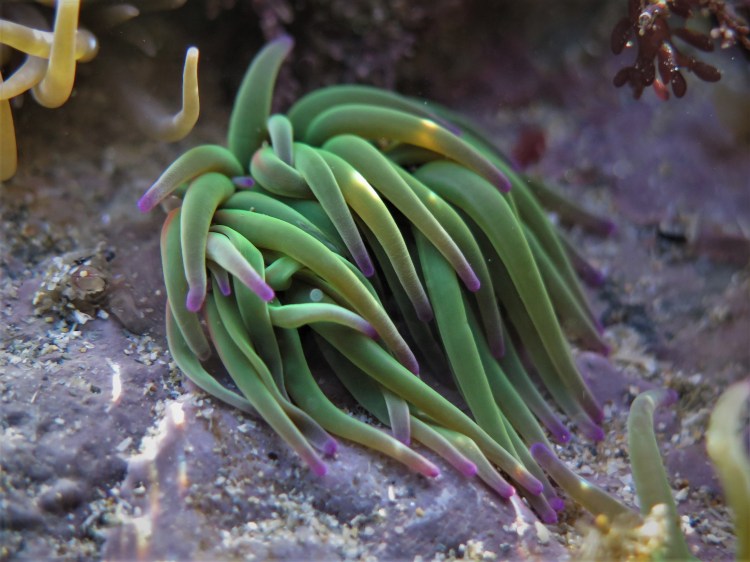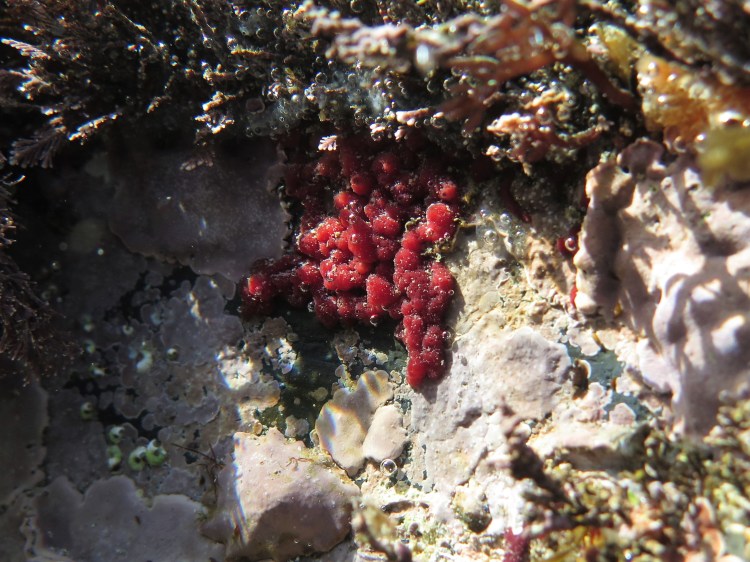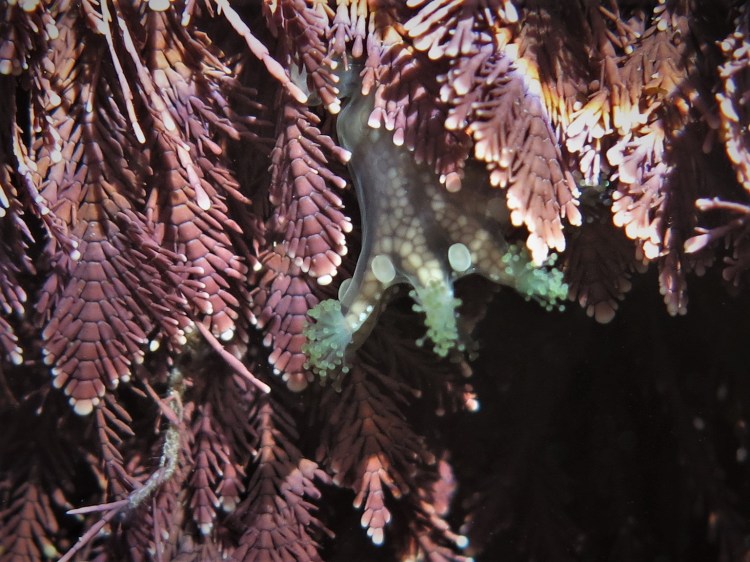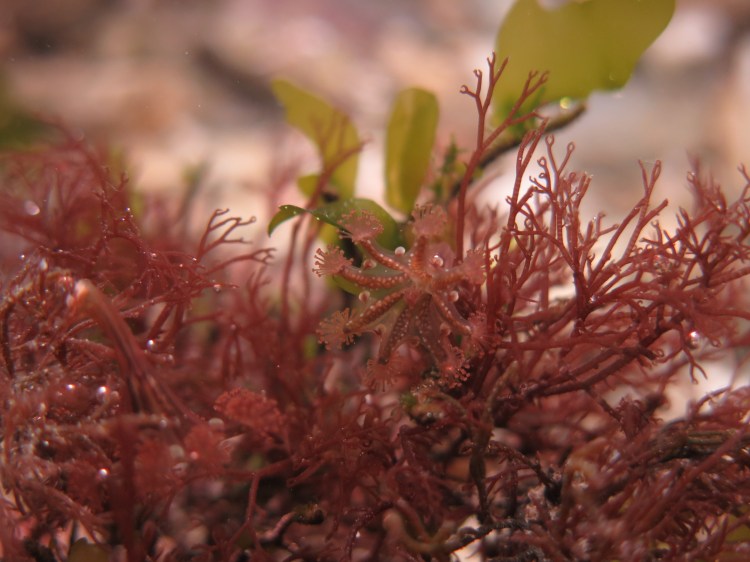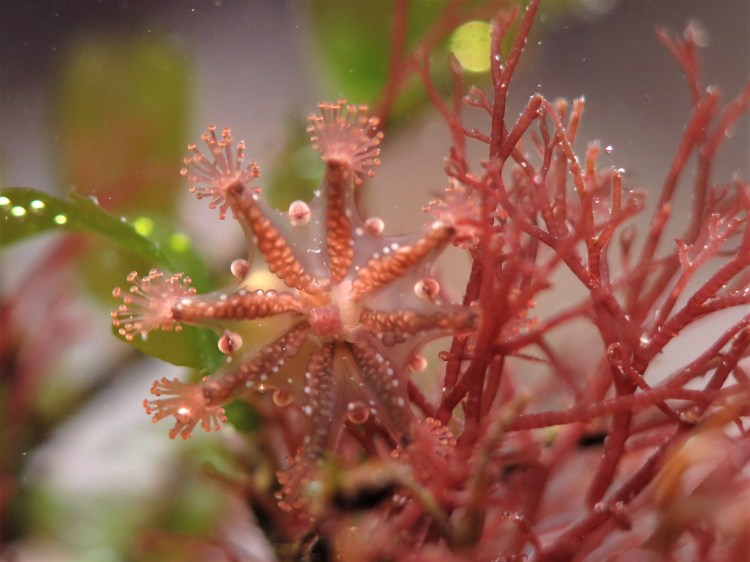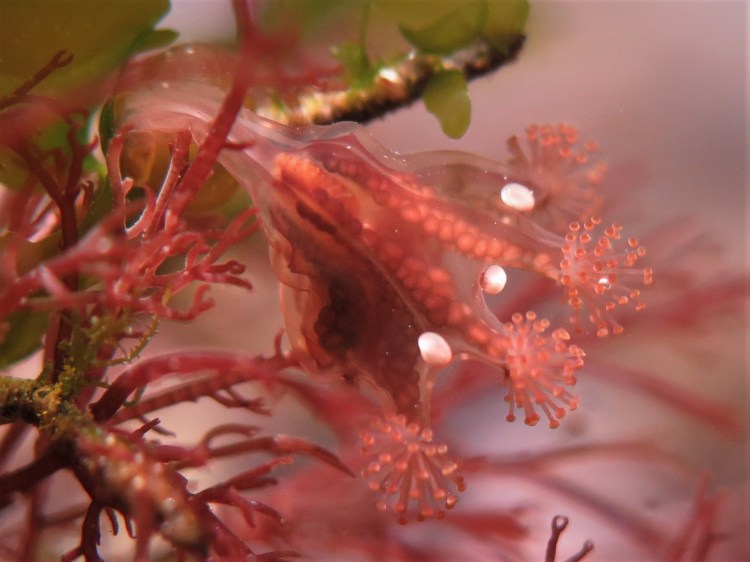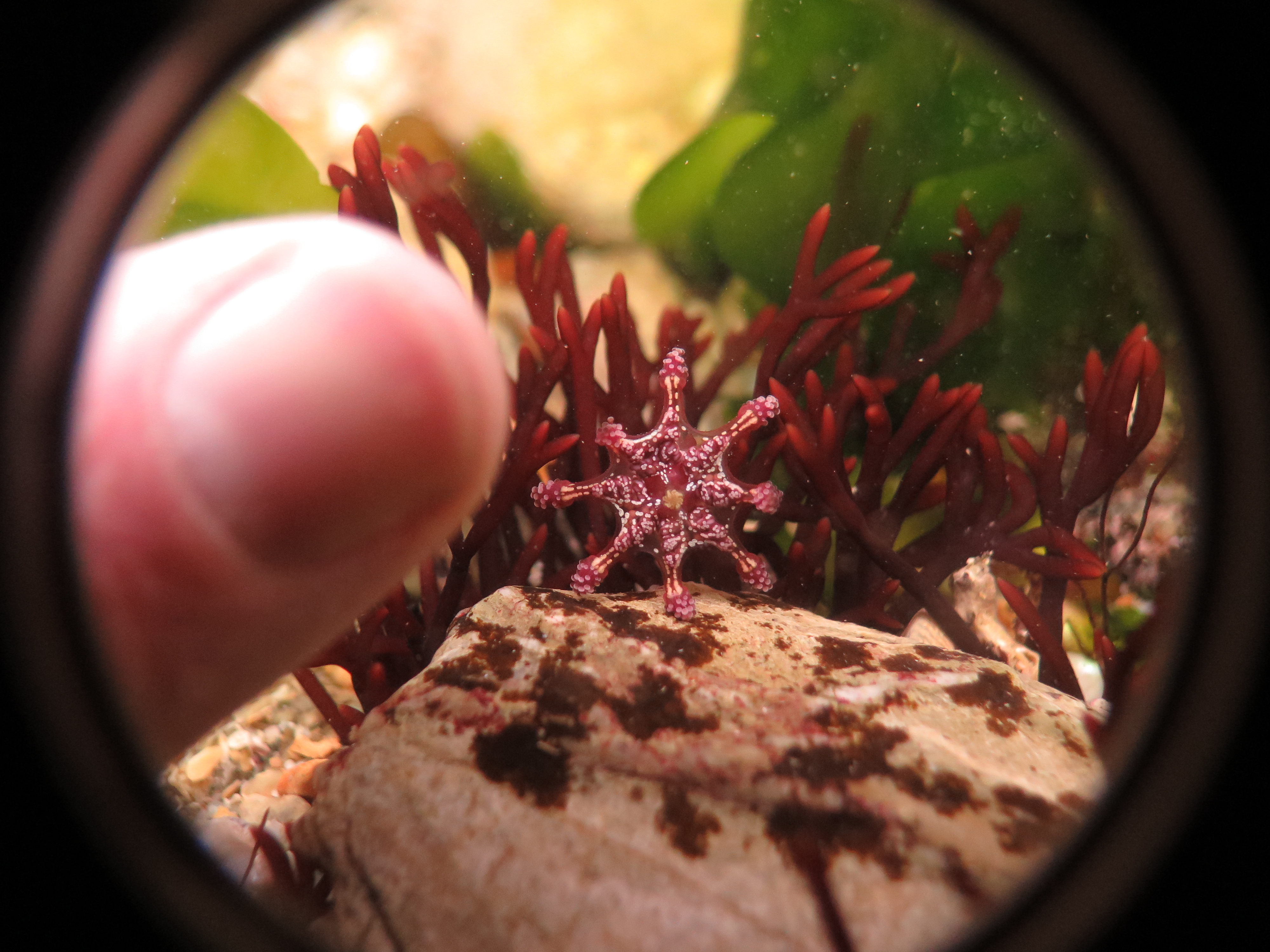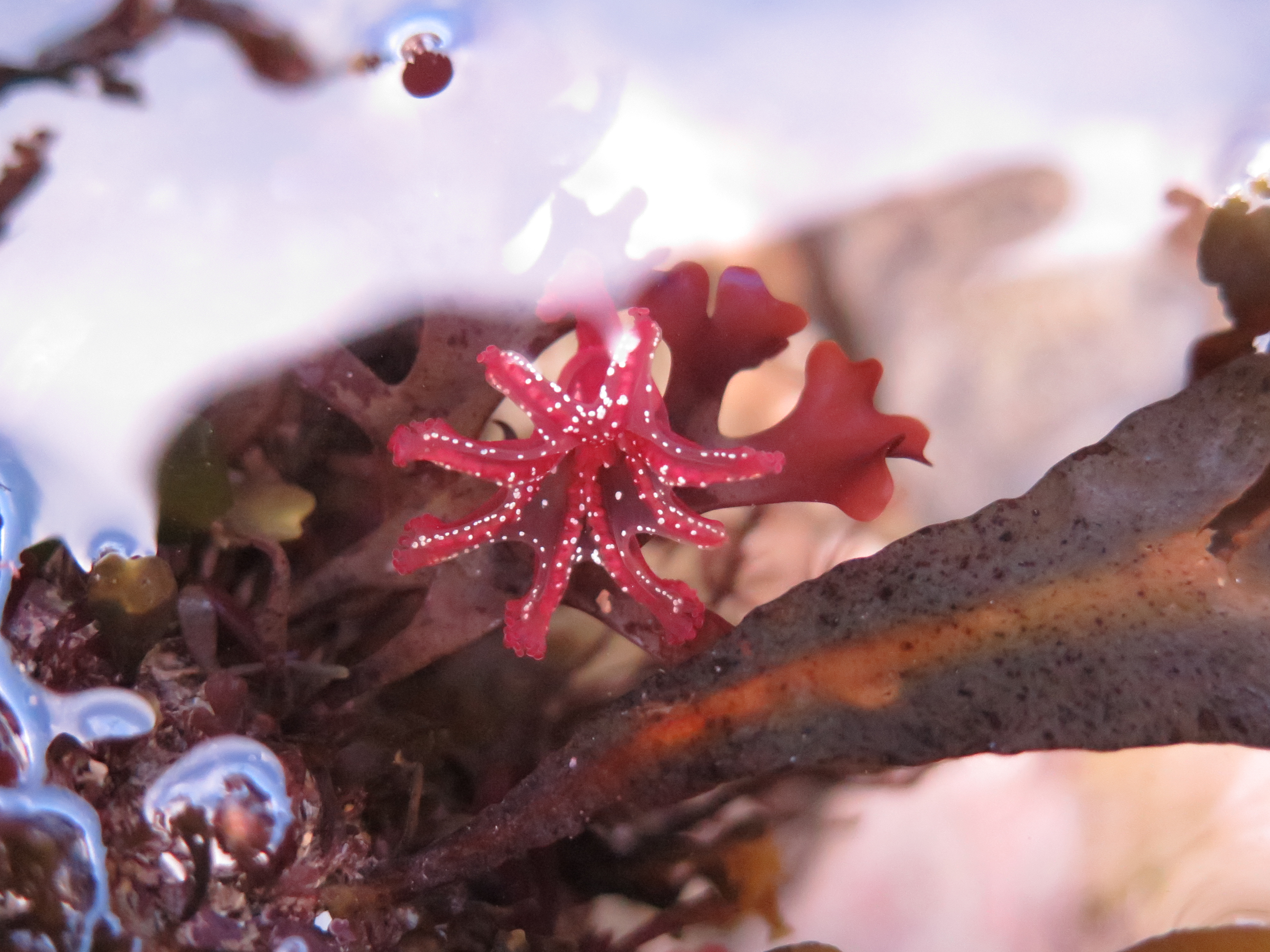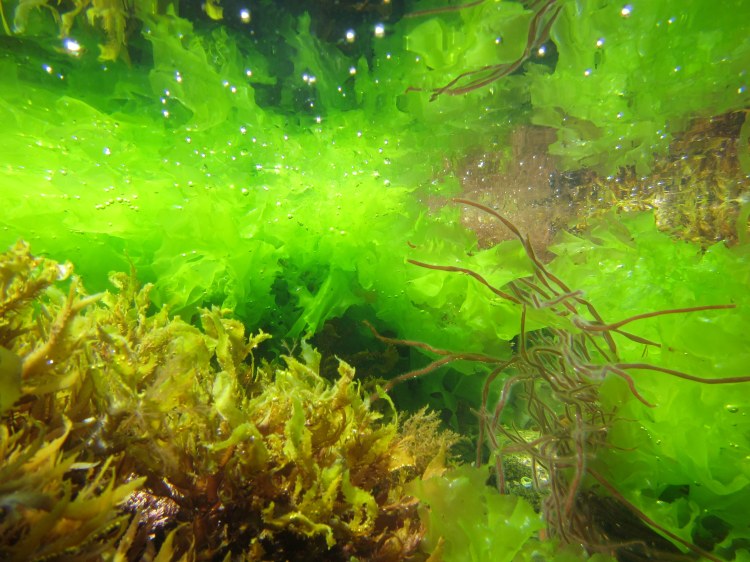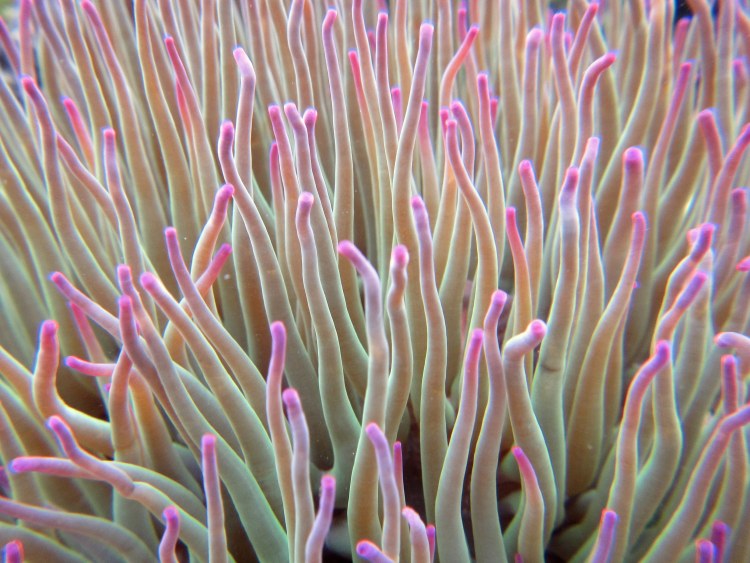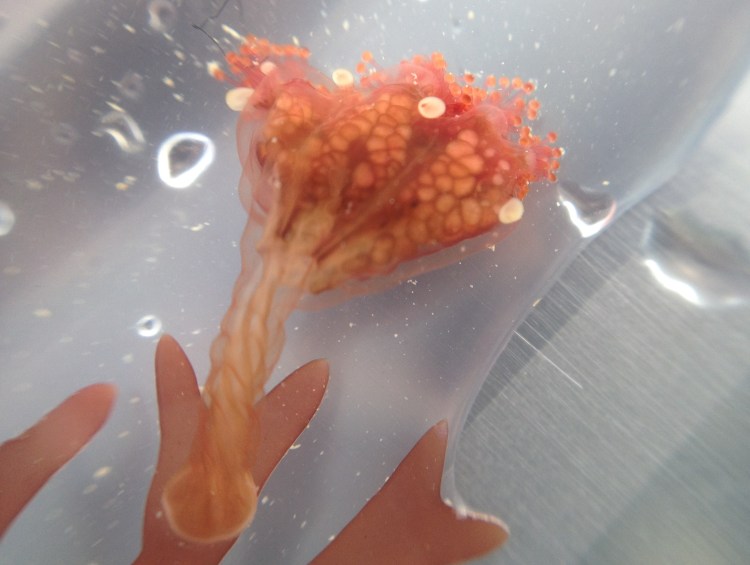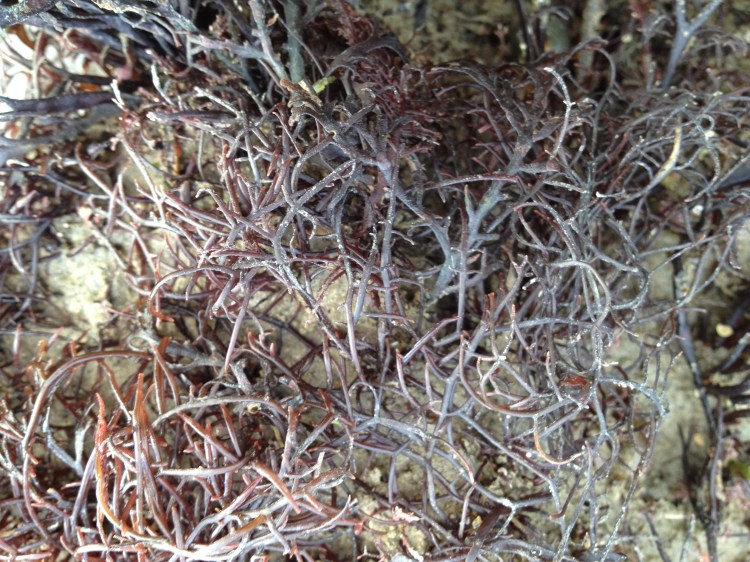 More photography practice lately. I have started to use Photoshop to post-process images, which is hard. I have sat with Thomas Daguerre for a session which was very helpful. For some images, the twiddling is of not much use; the image above of a Bull huss egg case for instance I am pretty happy with as is. Below I have pasted some before and after-Photoshop photo’s. Mostly adjusting highlights and contrast, cropping and playing around with sharpness (in the RAW files), most images tend to be a bit reddish. I have not bothered to tackle the ‘marine snow’ with the Spot Healing brush tool. First, Snakelocks anemones, next, Cocks’ comb Plocamium, then Harpoonweed Asparagopsis armata and an old kelp holdfast covered in feeding Grey topshells Gibbula cineraria.
More photography practice lately. I have started to use Photoshop to post-process images, which is hard. I have sat with Thomas Daguerre for a session which was very helpful. For some images, the twiddling is of not much use; the image above of a Bull huss egg case for instance I am pretty happy with as is. Below I have pasted some before and after-Photoshop photo’s. Mostly adjusting highlights and contrast, cropping and playing around with sharpness (in the RAW files), most images tend to be a bit reddish. I have not bothered to tackle the ‘marine snow’ with the Spot Healing brush tool. First, Snakelocks anemones, next, Cocks’ comb Plocamium, then Harpoonweed Asparagopsis armata and an old kelp holdfast covered in feeding Grey topshells Gibbula cineraria.

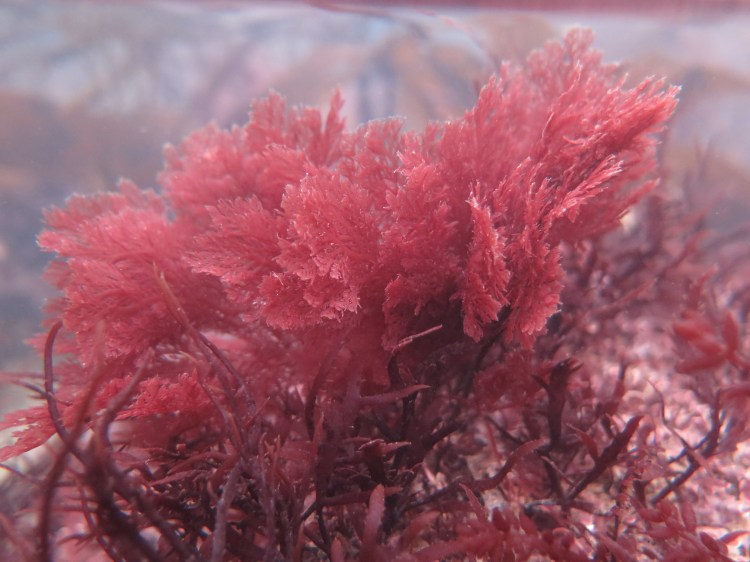
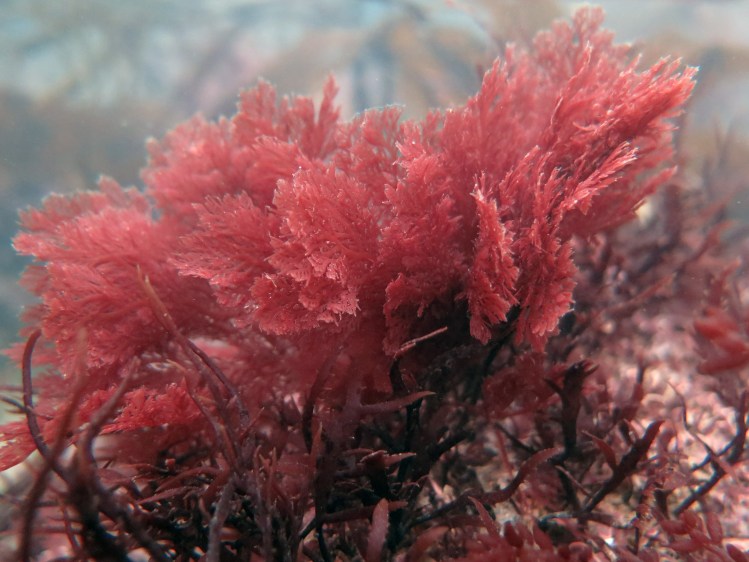
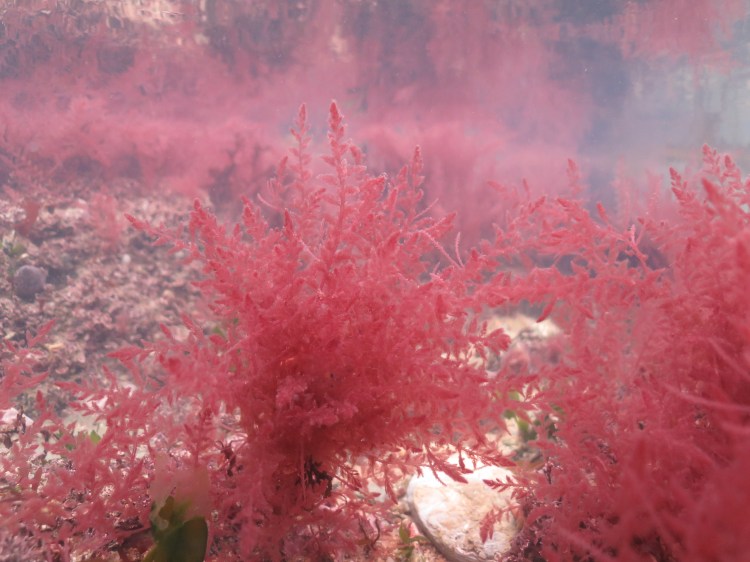
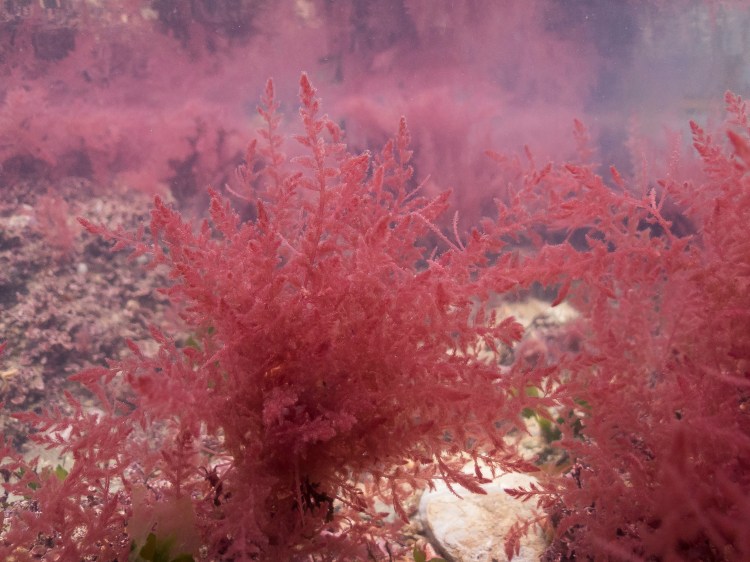
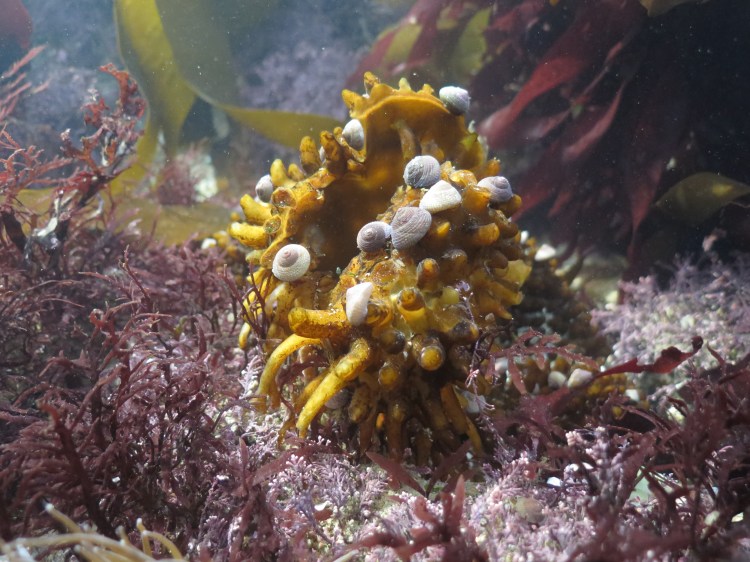
 On and under the seaweeds I encounter many interesting tiny animals, but it is hard to take good photo’s without a macrolens. I have pasted a couple photo’s below (none have been edited in any way): the Stalked jellyfish Haliclystus octoradiatus (these can also be reddish or brownish, and can be found on a wide variety of seaweeds), a sponge, a juvenile Snakelocks anemone Anemonia viridis (next to a Flat top shell Gibbula umbilicalis) and the Star ascidian Botryllus schlosseri where I later noticed the fecal pellets underneath. Pooping tunicates, that is what we need more pictures of!
On and under the seaweeds I encounter many interesting tiny animals, but it is hard to take good photo’s without a macrolens. I have pasted a couple photo’s below (none have been edited in any way): the Stalked jellyfish Haliclystus octoradiatus (these can also be reddish or brownish, and can be found on a wide variety of seaweeds), a sponge, a juvenile Snakelocks anemone Anemonia viridis (next to a Flat top shell Gibbula umbilicalis) and the Star ascidian Botryllus schlosseri where I later noticed the fecal pellets underneath. Pooping tunicates, that is what we need more pictures of!

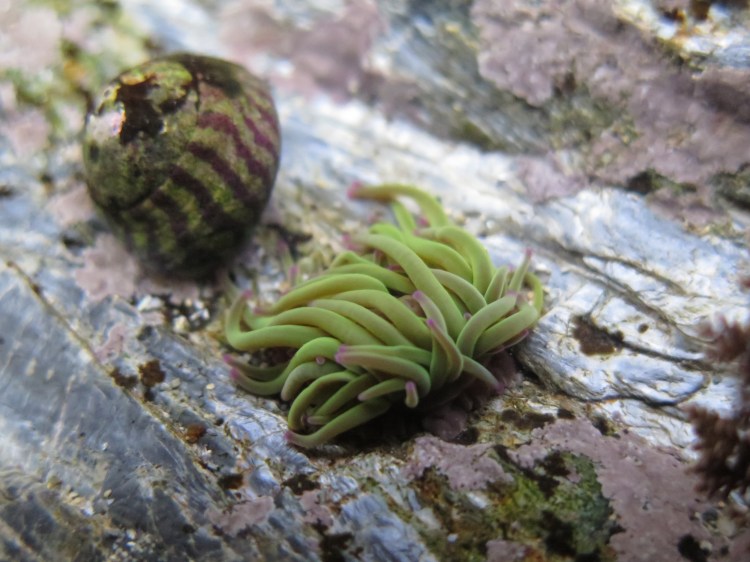
 Finally, some more before- and after- Photoshop images. The first is the nudibranch Rostanga rubra (‘Red doris’) which was only 5mm or so (see also the tiny Daisy anemone in the background). I shot it today, very cold: 4 degrees, and the water might have been only 8 degrees, brrrr! Next, a closeup of the seaweed Osmundea (see the first photo of this post) which shows its interesting pigmentation. The photo’s are nothing special yet, but I notice I am making progress. Excitingly, I just have ordered a macro wetlens and so hope to get some proper macro photography going soon!
Finally, some more before- and after- Photoshop images. The first is the nudibranch Rostanga rubra (‘Red doris’) which was only 5mm or so (see also the tiny Daisy anemone in the background). I shot it today, very cold: 4 degrees, and the water might have been only 8 degrees, brrrr! Next, a closeup of the seaweed Osmundea (see the first photo of this post) which shows its interesting pigmentation. The photo’s are nothing special yet, but I notice I am making progress. Excitingly, I just have ordered a macro wetlens and so hope to get some proper macro photography going soon!